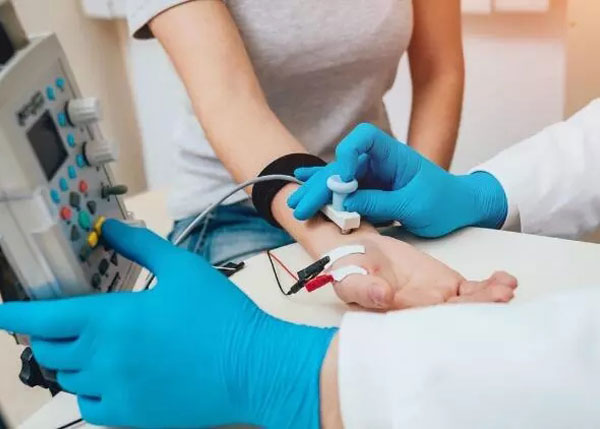Electromyography (EMG)

Our perception of the environment and our reactions to adapt ourselves to it can occur through bioelectric processes.
Physical (light, heat, burns, bites, pain, touch, pressure, etc.) and chemical environmental factors (taste and smell compounds) and factors indicative of physical state (position, tension, weight, hunger, etc.) are converted into electrical signals by specialized receptors and transmitted to the corresponding sensory nerves. These sensory nerves transmit electrical signals through the spinal cord to the central nervous system, which evaluates them and compares them to signals stored in memory to recognize them as sensations.
These emotions felt by the organism in relation to its environment determine the state of the organism and cause the organism to react in order to adapt to the state of the environment, and naturally, the reaction is directed toward protecting the organism and the survival of its life, and thus its species.
The most familiar response is movement. Electrical signals from the brain's generator cells responsible for movement are sent to the spinal cord and from the spinal cord to the corresponding muscles via nerve lines.
The nerves that carry these sensory and motor signals can be likened to a telephone line with thousands of insulated wires.
To bend your fingers the way you want them to, if we're referring to computer language, it's only possible through the smooth exchange of millions of bits of information per second. This requires a certain speed and quality of electrical signals passing through nerve fibers, a certain flow of electrical signals from nerves to muscles, and a certain electrical behavior of the muscles themselves.
Electroneurophysiology is the laboratory branch of neuroscience that examines electrical conduction in sensory and motor pathways, reflex responses in these pathways, the excess of electrical signals from motor nerves to muscles, and the electrical behavior of muscles. Electromyography is a method of measuring and evaluating the electrical status of these elements, detecting abnormalities and revealing pathology. Electromyography is one of these test methods applied in line with these purposes.
The purpose of the EMG procedure
- Measurement of nerve conduction velocity of both sensory and motor nerves, and amplitude of sensory and muscle action potentials.
- (nerve damage in neuropathy) and general (polyneuritis).
- Measurement and temporal evaluation of reflex arc (H) and delayed motor response (F) and comparison with the contralateral arm and leg.
- Needle electromyography to evaluate rest activity, motor unit potential, and concentric muscle contraction exercises to assess nerve damage in muscles (motor neurone disease, cervical disc herniation, entrapment neuropathy, nerve trauma or injuries) or diseases in the muscle itself.
- Evaluate neuromuscular junction disorders (e.g., myasthenia gravis, botulism) which evaluate electrical impulses moving through the nerve to the muscle.
- Determine the extent and localization of these diseases and provide information to the clinician to assist in the evaluation of treatment options.
In what cases is an EMG test indicated?
- Lumbar and neck hernias,
- Numbness, burning sensation, pain in the hands and feet
- Numbness and weakness in the arms and legs,
- Numbness in diabetic patients
- Numbness in dialysis patients
- Muscular atrophy and muscle loss
- Muscle spasms and cramps,
- Muscle aches and pain
- Episodic weakness
- Ptosis due to weakness, especially later in the day
- Facial paralysis
- Weakness in certain muscle groups
- Movement and sensory disorders due to accidents and sharp force injuries
- Movement and sensory disorders due to injections
- Movement and sensory disorders due to poisoning and use of drugs
